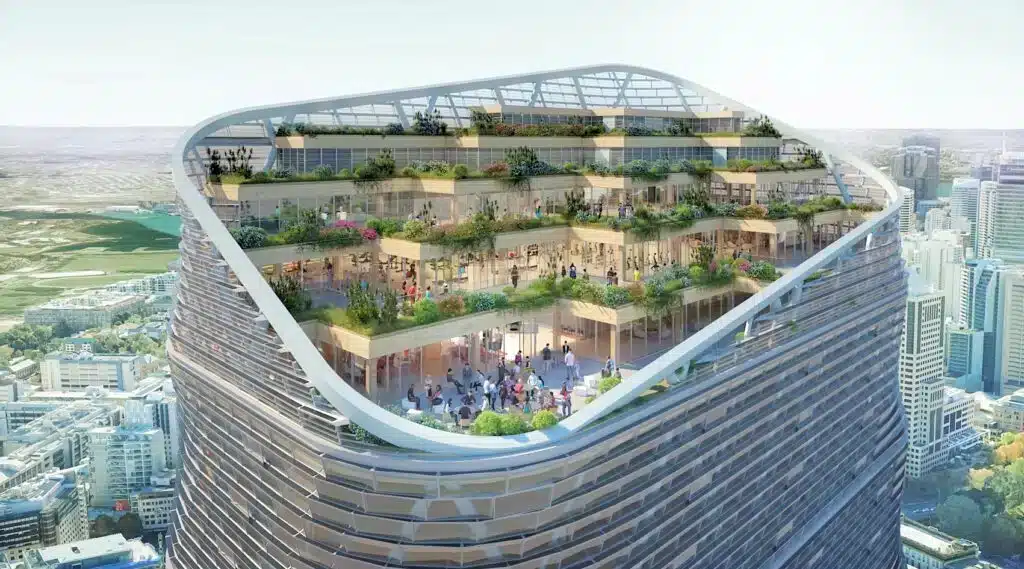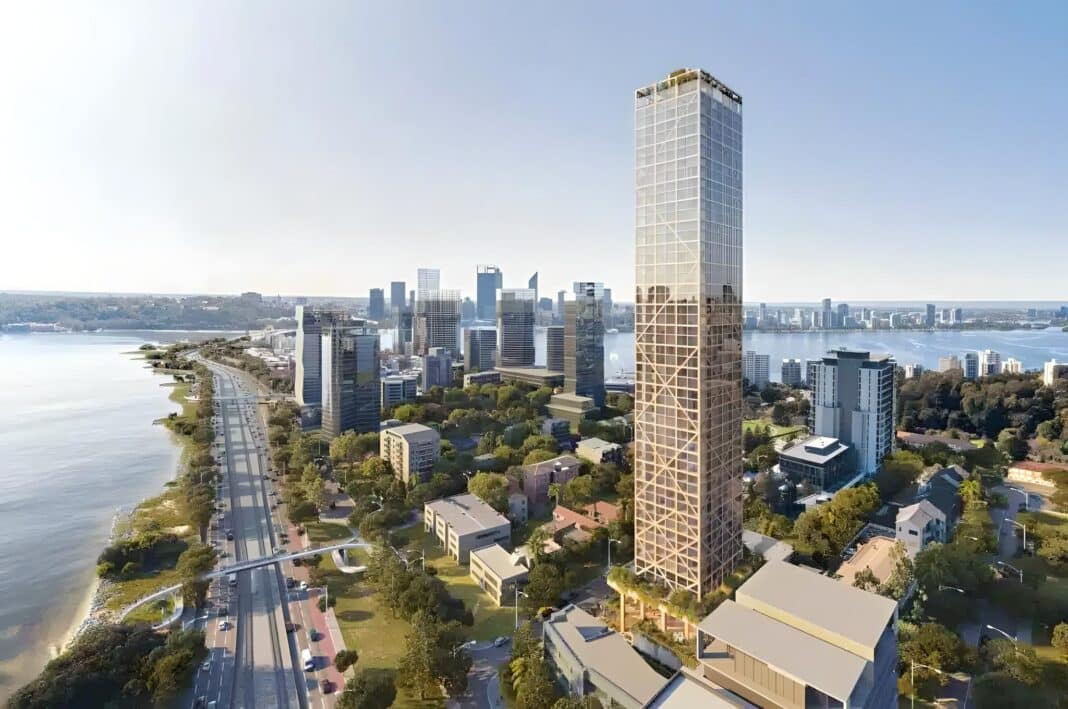The developer behind C6, which, once constructed, will become the world’s tallest hybrid timber building, “will never build another building that is not hybrid.”
In a wide-reaching interview with the Urban Development Institute of Australia’s (UDIA) West Australian chapter, James Dibble, Managing Director of Grange Developments, said the project team behind South Perth’s 50-storey skyscraper is now on the lookout for a builder that can manage “cost escalation.”
“We have a detailed design and have run a third round of EOI for the timber pricing,” Mr Dibble said, adding, “We have shortlisted three international timber suppliers, and timber pricing has come down globally, which is helpful.”
Last year, Wood Central reported that C6, a $350m tower, was approved by the WA planning authority after it deemed that the project, made up of 42% timber, met “design excellence” and “global sustainability standards.”
“We didn’t crack everything that we set out to achieve with this project, including reaching cost parity with traditional construction, but we did reduce that threshold from 20% to 9.8%, which we feel is a meaningful margin,” Mr Dribble said, with the mass timber consultants working on the project have experienced significantly increased enquiry levels from listed firms and top-tier developers who are seeing the benefits of the novel construction systems.
“I think they would be considering including at least some elements of mass timber in their designs, and I think if that trend continues, then we will have done our job right,” with all engineering and documentation provided to architects and engineers “open source” to assist with future projects.
As for the challenges, “there is generally an opinion that a hybrid building, including mass timber, would be 20% more expensive than conventional construction, and “with developers running on such small margins, that is a risk.”
Also, “public perception is also a barrier,” with some people thinking timber buildings are structurally inferior, “when in fact they are structurally inferior in many ways,” he said. “There is also a perception of fire danger, when in fact timber buildings can perform better in fire compared to steel.”
In October, Wood Central reported that C6, which is three metres taller than Sydney’s Atlassian high rise, will be carbon-negative, utilising cross-laminated timber, glue-laminated timber and laminated-veneer lumber.

And whilst Mr Dibble said that the supply chain for mass timber is growing at speed, it is difficult to find companies that work across all the different mass timber components.
“It’s hard to find a company that does all the different components, so you have different specialisations in different aspects, and even then, it’s hard to find a supplier that can do the quantum of timber required.”
“Then, from a manufacturing perspective, having pressures that are being enough and having technically to make sure it all comes together is a challenge,” he said.
Mr Dibble is a strong supporter of mass timber construction systems and was a keynote speaker at last year’s Timber Offsite Conference (now rebranded as Timber Construct), with C6 undergoing several design iterations before being approved late last year.
“Just 600 seeds would produce 7,400 cubic metres of mass timber, which would regrow after being used in the development,” he told the Urban Developer in a 2022 interview. “You can’t regrow concrete,” he said, with the project team “providing an open source blueprint that utilises hybrid construction methodology to offset carbon within our built environment.”
“We as a company are not driven solely by profit: we are driven by the need to urgently reduce our carbon footprint whilst delivering happier, healthier homes,” Mr Dibble told the Urban Developer.
As for the future, “Australia has a lot to be proud of in this space,” Mr Dibble told the UDIA, adding that “we have two of the most advanced hybrid buildings and that is because we have super smart people here that really understand it, we should embrace iot.”







